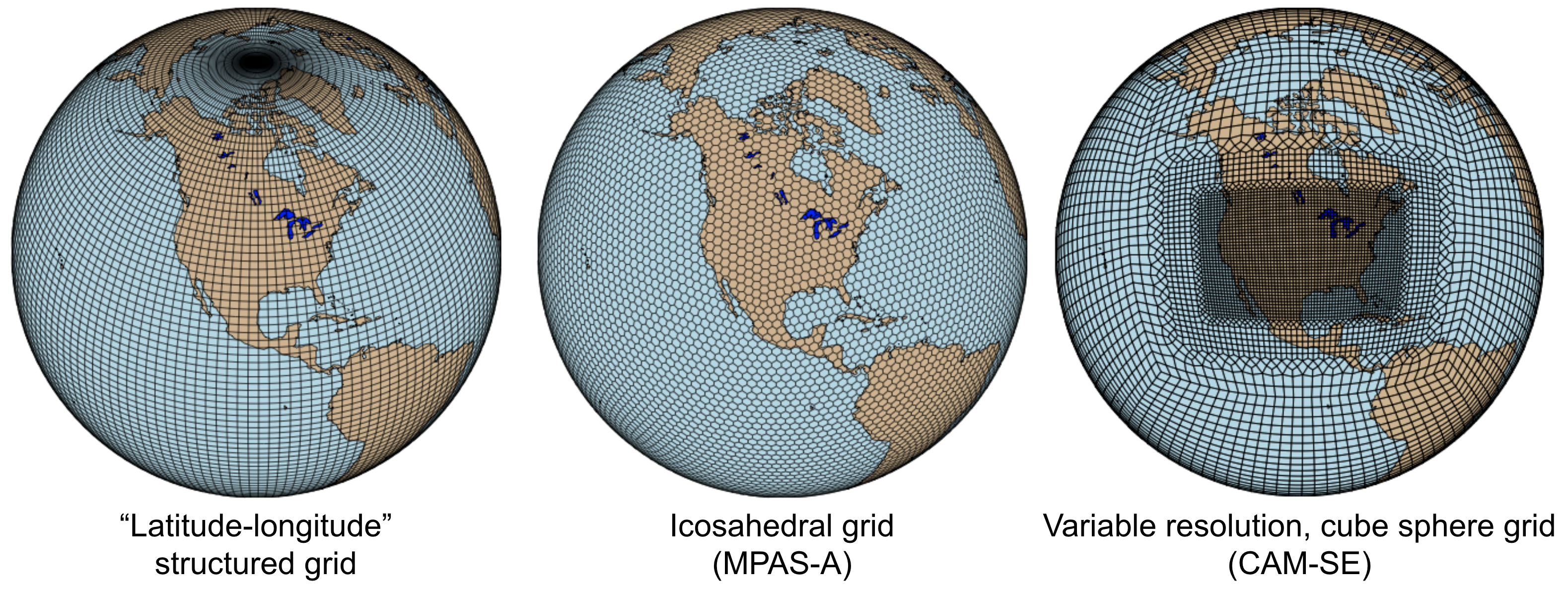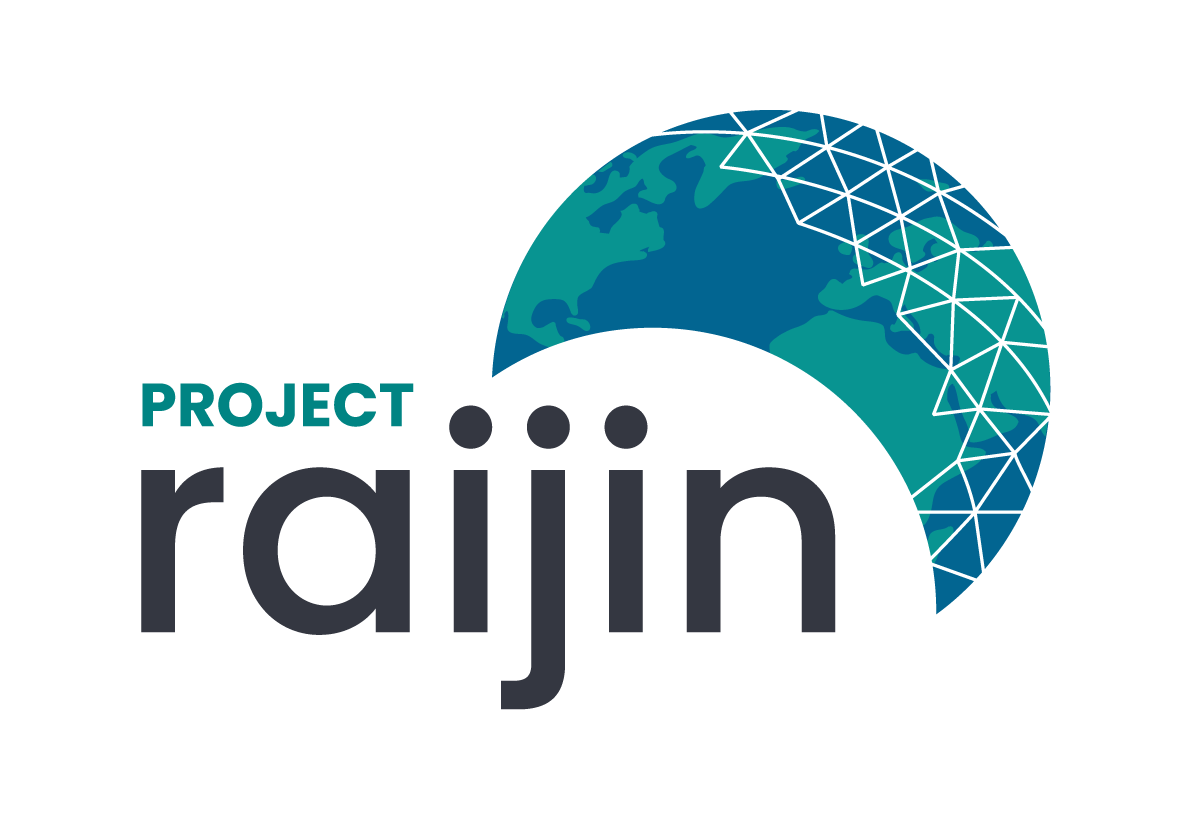Project Raijin is an NSF EarthCube-funded effort whose goal is to enhance the open source analysis and visualization tool landscape by developing community-owned, sustainable, scalable tools that facilitate operating on unstructured climate and global weather data. Working in close collaboration with atmospheric modelers, we plan to: (1) develop extensible, scalable, open source tools supporting fundamental analysis and visualization methods capable of operating directly (without resampling) on unstructured grid model outputs at global storm resolving resolutions; and (2) establish an active, vibrant community of user-contributors, committed to extending our work beyond the scope of this NSF award, thus helping ensure the long term sustainability of the project.
Introduction¶
Culminating nearly two decades of development and evaluation, the climate and global weather modeling communities have in recent years begun to transition in earnest to dynamical cores employing more flexible, but more complex, unstructured grids upon which governing numerical equations of state are solved. The move away from the more simple, regularly structured “latitude-longitude” grids that served these modeling communities for so long has been driven by, perhaps more than anything else, greatly improved computational scalability afforded by unstructured meshes, allowing for higher and higher resolutions, and therefore, more realistic simulations of the earth’s oceans and atmosphere. Numerous institutions worldwide are now deploying unstructured grid dynamical cores (or “dycores”) with the ultimate long term pursuit of producing the world’s first global cloud resolving model.

The adoption of unstructured mesh models by so many geoscience communities brings with it a two- fold cost. First, the increased model resolution enabled by these dycores results in the output of more data, further exacerbating an already existing “Big Data” problem. Second, the existing, general purpose software tools available for analyzing, post-processing, and visualizing geoscience model outputs primarily operate on structured grid data, providing little or no support for unstructured meshes. The combined impact of greatly increasing data volume, and lack of tools capable of operating on these model outputs, let alone scalable tools, gravely impacts the climate and global weather modeling community’s ability to reap the full benefits of the substantial investments made in these next generation models.
Goals¶
The goal of this project, which we call Raijin, is to enhance the analysis and visualization tool landscape by developing community-owned, sustainable, scalable tools that facilitate operating on unstructured grid model outputs arising from climate and global weather simulations. Working in close collaboration with climate and weather modelers we plan to:
develop extensible, scalable, open source tools supporting fundamental analysis and visualization methods capable of operating directly (without resampling) on unstructured grid model outputs at global storm resolving resolutions, and
establish a vibrant community of user-contributors, committed to extending our work beyond the scope of this proposal, and helping ensure the long term sustainability of the project.
Development Environment¶
The primary environment for this effort will be the Scientific Python Ecosystem. We will leverage, in particular, the NSF-supported, open development Xarray and Dask packages, and the Pangeo community. To better support both of our primary goals, our work will be conducted under an open development model that encourages participation in the project at all levels. Relatedly, to better support interoperability, sustainability, usability and repurposing our work, we will adhere to practices advocated by the NSF Recommended Standards and Specifications for EarthCube Projects.
Uxarray¶
To import unstructured data into Python, we will create a new Python object based on Xarray, called UXarray, which will support reading and recognizing unstructured grid models. To read further documentation, work with the code, start a discussion, make a request, or report an issue, please visit:
Calendar¶
Project Raijin calendar events (basically our monthly meetings for now) are open to public; so anyone with any level of familiarity is welcome to attend!
Next: Uxarray
